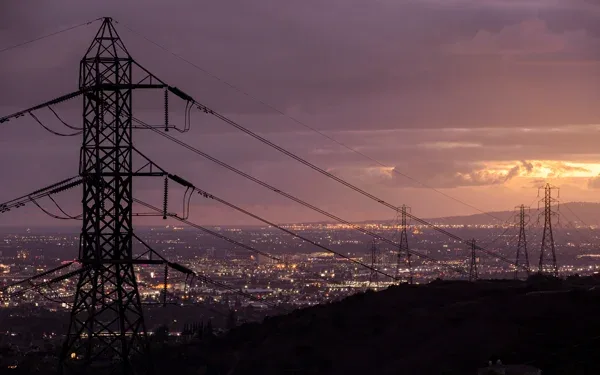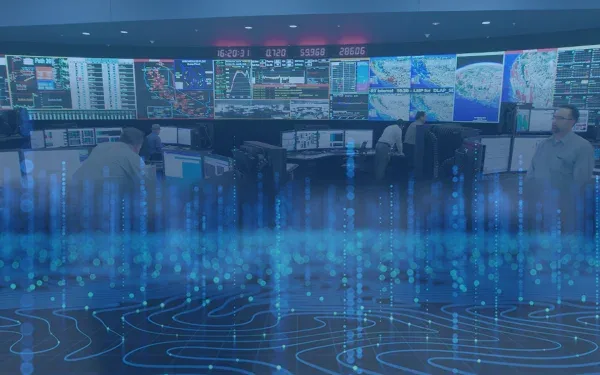Strengthening reliability through year-round gas-electric coordination

Ensuring reliability of the electric grid for California and the rest of the Western United States demands more than managing power flows; it requires continuous and coordinated engagement with the natural gas sector, as gas-electric coordination is a year-round effort essential to maintaining the reliability of both energy systems. While gas-electric coordination gained national prominence following infrastructure and generator failures associated with Winter Storm Uri in Texas in 2021 and Winter Storm Elliott a year later in the Central and Eastern U.S., the California Independent System Operator (ISO) has been formally coordinating with the gas industry since November 2010.
This formalization followed a prolonged SoCalGas outage that significantly impacted electric generation for eight weeks in 2010. Even before that event, informal information sharing about gas burn and system conditions had laid the foundation for today's collaborative processes. Subsequent extreme weather and reliability events in the U.S. also impacted gas supplies to California and extreme situations such as the San Bruno gas pipeline explosion in 2010 and Aliso Canyon gas storage facility leak and shutdown in 2015-16, and the unplanned shutdown of a storage facility in the Pacific Northwest in January 2024, further reinforced the importance of robust gas-electric coordination.
Today, the ISO coordinates with both intrastate and interstate pipeline operators to mitigate risks and enhance reliability. Among other actions, a daily report is distributed to ISO Operations that includes:
- A summary of current gas system conditions in the West, including pipeline maintenance and system capacity;
- Thermal generation demand;
- Storage inventory levels.
The ISO also monitors notices regarding planned and unplanned events as well as key natural gas price indictors in California and at Henry Hub in Louisiana, the gas delivery system that transports billions of cubic feet of natural gas annually to pipeline systems across the country.
Weekly coordination meetings – with more frequent discussions as needed – span real-time to long-term horizons. These calls are pivotal in identifying and mitigating risks related to overlapping outages or system constraints.
Real-time and day-ahead gas tools are maintained to support SoCalGas, PG&E Gas and Kern River system limitations at the gas companies’ request, and curtailment procedures are in place to manage emergency scenarios for all natural gas operators serving ISO electric generation facilities.
This collaboration is more critical than ever. Changing resource patterns, particularly the growth of solar generation, have shifted operational demands for the bulk electric system. Gas-fired generators are increasingly called upon for their flexibility, especially during steep morning and evening ramps up or down when solar output changes rapidly. This dynamic has put new pressures on the natural gas system and highlighted the need for deeper coordination throughout the year.
Gas-electric coordination benefits from a range of tools and frameworks. Under confidentiality agreements, the ISO shares daily and hourly estimated gas usage by power plants with pipelines, helping utilities better forecast electric generation demand on the gas system. These estimates are generated as part of the California ISO’s market processes and are shared with gas entities to help support their gas system planning. Internally, GIS-based maps illustrate the spatial relationships between pipelines, gas hubs, and thermal generators, improving situational awareness and operational planning. The ISO’s collaboration with Reliability Coordinator (RC) West extends these efforts beyond California. RC West’s Real-Time Working Group and seasonal assessments provide a platform for electric and gas stakeholders to discuss conditions, share updates, and prepare for operational challenges across the Western Interconnection.
The ISO also participates in regional and national initiatives to promote harmonization between gas and electric operations. This includes engaging in Joint Agency Meetings related to Aliso Canyon, contributing to the biennial assessment input assumptions, and collaborating under the Pacific Northwest and Western Region Mutual Assistance Agreements. RC West has expanded its relationships to include the Northwest Gas Association, enabling improved coordination and mutual understanding following the January 2024 cold weather event challenges at the Jackson Prairie Gas Storage facility in the Pacific Northwest during the 2024 Martin Luther King holiday weekend.
Looking ahead, the ISO continues to explore ways to deepen this vital collaboration. Future efforts include tabletop exercises with gas and electric operators to simulate emergency scenarios and improve readiness.
Through the many gas-electric harmonization initiatives in which we participate, the ISO is helping shape a forward-looking strategy that supports both sectors in managing increased variability and operational stress. These efforts underscore a shared commitment to delivering reliable, resilient energy service to California and the broader Western region.


